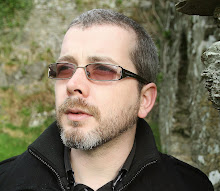Thursday, 27 February 2014
Equal Danger by Leonardo Sciascia
At a little over 100 pages, I suppose this should be classified as a novella. It took me quite some time to read it, however. Longer than it's taken me to read some novels. The prose is dense, the sentences long and there is a hell of a lot of telling, and not much showing in those opening pages. Ordinarily, this is the type of book that I would happily avoid. However, one of my PhD supervisors recommended it to me as an example of behaviourist POV, and since that's my current literary obsession (and will likely continue to be for the next few years) I pushed myself to read it, rather than give up after those initial confusing pages.
Am I glad I persevered?
Yes.
It took me about 15 pages to get used to Sciascia's style, and by then it had changed somewhat. With the introduction of the first suspect (the crime being the serial killing of of a district attorney and a number of judges) the writer introduces dialogue. This marks a switch from telling to showing, and the point from which the story became much more accessible to me. I was also able to get a better handle on the main character, Inspector Rogas, as he interacted with these suspects.
I wonder if Sciascia had started with a scene featuring dialogue, or a more focussed/detailed look at Inspector Rogas, would I have found this an easier read? Probably.
But that's by the by. In the end, the book won me over, and interestingly, when I flicked back to the start I found the opening pages much more accessible. I'm beginning to think that this read was a good burst of exercise for my brain. And I'll be thinking about Equal Danger (and what I can take from it as a writer) for a while to come.
Labels:
100 books,
6/100,
behaviourist,
Equal Danger,
Leonardo Sciascia
Subscribe to:
Post Comments (Atom)





No comments:
Post a Comment